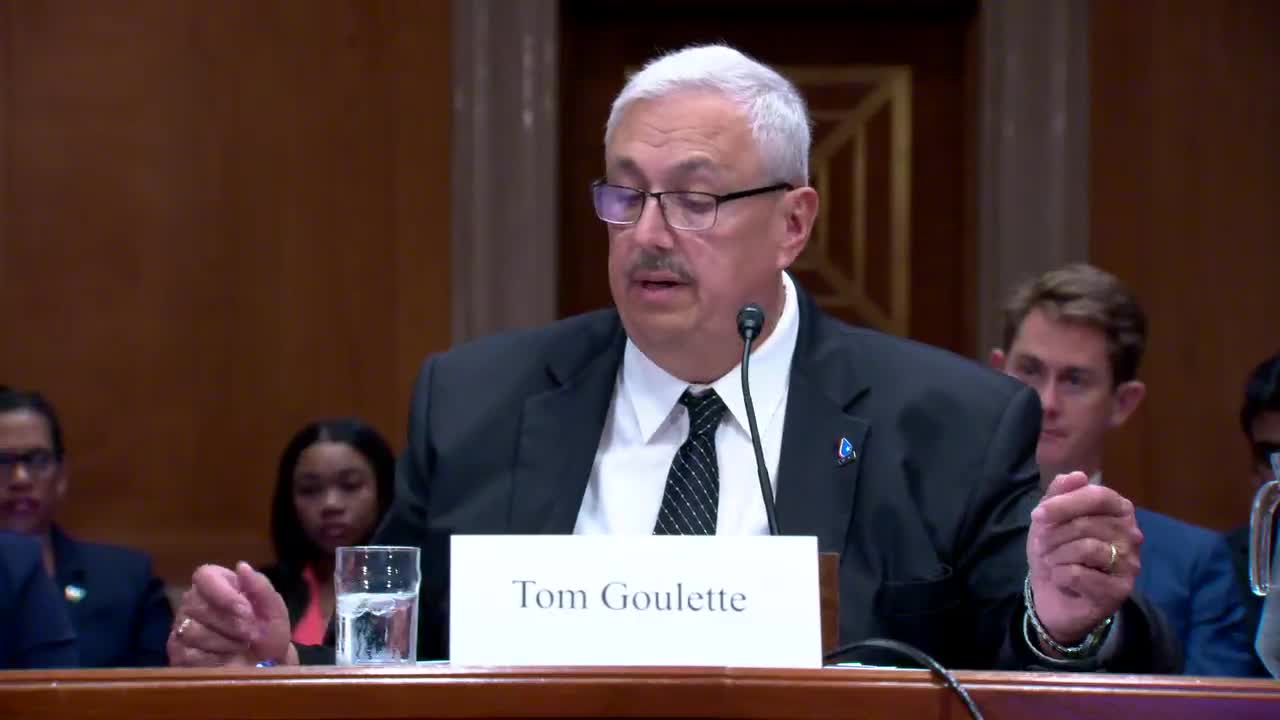Arkansas and Nebraska tackle federal funding challenges for water infrastructure upgrades
April 30, 2025 | Environment and Public Works: Senate Committee, Standing Committees - House & Senate, Congressional Hearings Compilation
This article was created by AI summarizing key points discussed. AI makes mistakes, so for full details and context, please refer to the video of the full meeting. Please report any errors so we can fix them. Report an error »

The U.S. Senate Committee on Environment and Public Works convened on April 30, 2025, to discuss strategies for enhancing water infrastructure programs, building on the successes of the Infrastructure Investment and Jobs Act (IIJA). The meeting focused on the critical role of federal investment in water infrastructure and the challenges faced by small and disadvantaged communities in accessing necessary funding.
The session began with discussions on the financial pressures faced by regional water systems. Committee members highlighted the importance of maintaining competitive rates while ensuring water remains affordable for consumers. It was noted that federal funding has significantly impacted these systems, particularly in alleviating the burden on ratepayers. However, concerns were raised about the decline in federal investment in water infrastructure, which has dropped by 77% since its peak in the 1970s. This decline poses a risk to the sustainability of water services and infrastructure maintenance.
A key point of discussion was the issue of matching funds required for federal grants, which many small communities struggle to meet. For instance, representatives from Arkansas reported that despite a substantial need for water infrastructure upgrades—evidenced by over $5 billion in requests—the requirement for a 50% match has hindered the utilization of available lead service line replacement funding. This situation has led to fears that unspent funds may be reallocated to other states, despite the pressing needs within Arkansas.
Testimonies from various stakeholders underscored the necessity for increased flexibility in funding requirements. Community leaders from Nebraska and Ohio shared their experiences navigating the matching fund challenges. They emphasized that reducing or waiving match requirements could enable more communities to access federal resources and complete essential projects. Proactive planning and collaboration among local agencies were highlighted as effective strategies for securing funding and addressing infrastructure needs.
The meeting concluded with a consensus on the need for a more adaptable funding framework that accommodates the diverse needs of communities across the nation. The committee members recognized that without significant federal investment and flexibility in funding structures, many communities may continue to face barriers in upgrading their water infrastructure, ultimately impacting water affordability and service quality.
As the committee moves forward, the discussions from this meeting will inform future legislative efforts aimed at strengthening water infrastructure programs and ensuring that all communities have access to the resources necessary for sustainable water management.
The session began with discussions on the financial pressures faced by regional water systems. Committee members highlighted the importance of maintaining competitive rates while ensuring water remains affordable for consumers. It was noted that federal funding has significantly impacted these systems, particularly in alleviating the burden on ratepayers. However, concerns were raised about the decline in federal investment in water infrastructure, which has dropped by 77% since its peak in the 1970s. This decline poses a risk to the sustainability of water services and infrastructure maintenance.
A key point of discussion was the issue of matching funds required for federal grants, which many small communities struggle to meet. For instance, representatives from Arkansas reported that despite a substantial need for water infrastructure upgrades—evidenced by over $5 billion in requests—the requirement for a 50% match has hindered the utilization of available lead service line replacement funding. This situation has led to fears that unspent funds may be reallocated to other states, despite the pressing needs within Arkansas.
Testimonies from various stakeholders underscored the necessity for increased flexibility in funding requirements. Community leaders from Nebraska and Ohio shared their experiences navigating the matching fund challenges. They emphasized that reducing or waiving match requirements could enable more communities to access federal resources and complete essential projects. Proactive planning and collaboration among local agencies were highlighted as effective strategies for securing funding and addressing infrastructure needs.
The meeting concluded with a consensus on the need for a more adaptable funding framework that accommodates the diverse needs of communities across the nation. The committee members recognized that without significant federal investment and flexibility in funding structures, many communities may continue to face barriers in upgrading their water infrastructure, ultimately impacting water affordability and service quality.
As the committee moves forward, the discussions from this meeting will inform future legislative efforts aimed at strengthening water infrastructure programs and ensuring that all communities have access to the resources necessary for sustainable water management.
View full meeting
This article is based on a recent meeting—watch the full video and explore the complete transcript for deeper insights into the discussion.
View full meeting